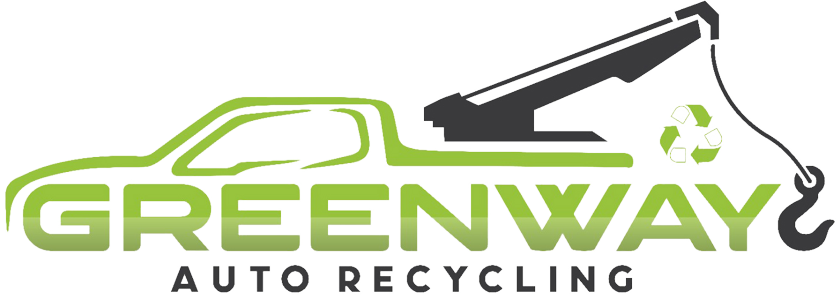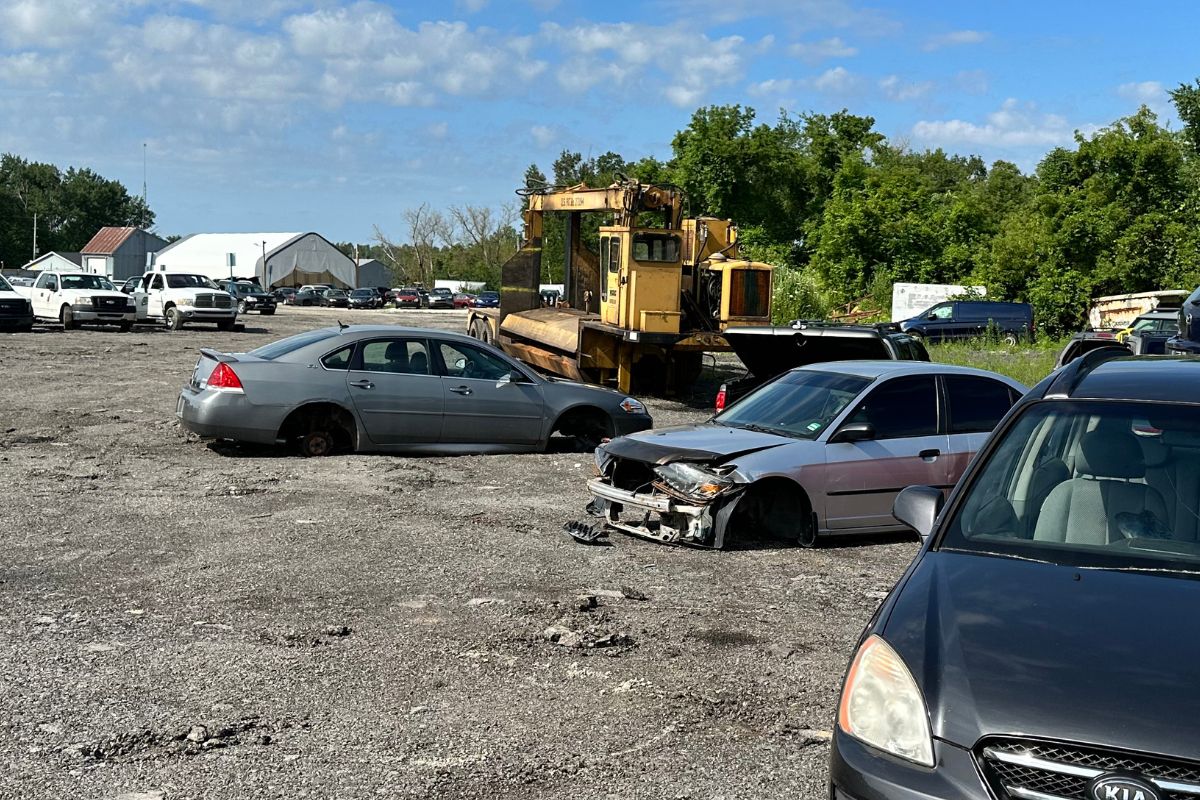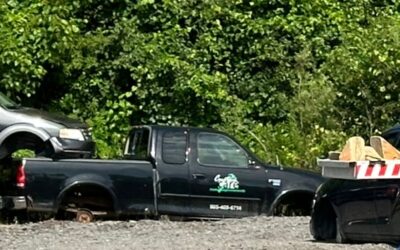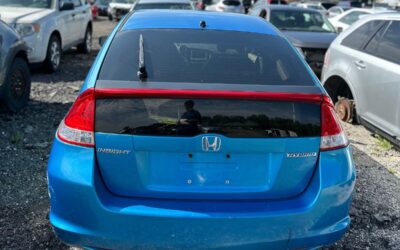Introduction
When it comes time to sell a car, many people assume the registration plates will stay with the car. In fact, in many cases, the seller will remove the plates before handing over the vehicle to the new owner. This brings up some important questions — can you sell a vehicle without plates? What documents do you need? What is the safest way to manage the transaction? If you find yourself in this situation, it is very important that you know the correct process.
Selling a car without plates is permitted in several provinces across Canada, but there are specific actions you must follow to avoid issues later. This guide aims to help you know what you need to know about selling a vehicle without plates and complete the sale without unnecessary concern.
Can You Sell a Vehicle Without License Plates in Canada?
Yes, it’s completely legal to sell a vehicle without license plates in Canada—provided you follow proper procedures. Each province has its regulations, but generally, when you sell your vehicle, the expectation is that you will remove your license plates before the new owner takes possession.
Depending on your regulatory framework, the plates are either transferred to your next vehicle or returned to your local Ministry of Transportation or ServiceOntario office. The new owner is responsible for registering the vehicle in their name and affixing their plates before they legally operate it on public roadways.
Reasons to Remove Plates Before Selling
There are various significant reasons to get plates removed before selling your vehicle:
-
- Plates belong to the owner, not the vehicle: They are associated with your personal driving history, insurance, and vehicle history.
- Avoid liability issues: If the buyer takes your plates and then ends up getting in trouble or committing offences, you can still be on the hook.
- Move the plates to another vehicle: You might want to keep the plates on your vehicle for the new vehicle, saving you on registration fees.
What paperwork is needed for selling a car without plates?
To sell a car without plates, you will need to assemble and fill out a few important documents. These documents help establish and prove ownership, as well as other relevant information, for record purposes and to serve as reliable proof for both parties. The paperwork you typically need will include:
-
- Vehicle Ownership (Registration Permit): Must be signed by both the seller and buyer.
- Bill of Sale: Includes the date, names of the seller and buyer, their addresses, details of the vehicle (VIN, make, model, and year), total sale price, and signatures.
- Used Vehicle Information Package (UVIP): In Ontario and a handful of other provinces, it provides history and lien information about the car.
- Safety Standards Certificate: While this is optional, many buyers will expect it if they want to register and drive the car right away.
- Lien Release Letter (if applicable): If there were amounts borrowed against the car, then you will need proof that this has been paid off.
Also Read: 5 Signs It’s Time to Scrap Your Old Car: A Canadian Driver’s Checklist
How to Sell a Car Without Plates: Step-by-Step Guide
Now you have a very simple process for selling your car without plates:
Step 1: Remove the Plates
When you have agreed to sell your car, immediately take off your plates before handing the car over to the buyer. Keep them in a safe place to transition them to another car, or to bring them back to your local registry.
Step 2: Gather the Paperwork
Collect all of the paperwork outlined above. Fill out and complete the Bill of Sale, and make sure the buyer has reviewed and signed all proper paperwork.
Step 3: Cancel or Transfer Your Insurance
Cancel your car insurance with your insurance company. If you are using the same plates in a different car, notify your insurance company.
Step 4: Finalize the Ownership
Transfer Sellers and buyers must complete the parts indicated on the vehicle registration permit. The buyer will then take the documentation to a local licensing office to transfer the vehicle into their name.
Step 5: Provide Buyer with Required Documentation
Provide the buyer with the Bill of Sale, the signed ownership permit, the UVIP (if applicable), and the Safety certificate (if available) as well.
Step 6: Notify the licensing authority
In some provinces, the seller will have to notify the Ministry of Transportation – or their licensing office – that you’ve sold the car. This protects you from any future issues.
Can a Buyer Legally Drive A Car Without Plates In Ontario?
No, a buyer cannot legally drive a car on public roads without plates. Once purchased, the new owner must register the car and obtain valid plates and insurance before operation. Nevertheless, many states issue temporary permits, which allow buyers to transport a vehicle legally while they register it, so long as there is a permit displayed on the car and it is valid. Temporary permits only last a limited time of 10-14 days.
What Happens to Your Old Plates?
After taking off your plates, you have some choices:
-
- Transfer to another vehicle: If you’re acquiring another car, you can transfer your plates to it.
- Return to the licensing office: If you don’t want them, you can return them to your local ServiceOntario or licensing centre.
- Keep for future use: Some provinces allow plates to be stored and used in the future if you have plans to register a new vehicle down the road.
Also Read: How To Keep Your Personalized Number Plates When Scrapping Your Car?
Key Points to Consider
Before selling a vehicle with no plates, remember:
-
- Always remove your plates before the vehicle leaves your possession.
- You should never allow the buyer to leave your possession without proof of temporary insurance and plates.
- Keep a copy of the Bill of Sale and any transaction records.
- Tell your insurance company about the sale as soon as possible.
- Return or transfer your plates according to local laws.
Conclusion
Selling a car without plates is common and easy to do in Canada if you go through the appropriate process. The key is to complete your paperwork, safely remove your plates, and handle the transaction carefully. You have to ensure the new buyer understands their responsibilities and protect yourself by keeping track of your sale.
Whether you are selling to a private buyer, a junkyard, or a scrap car removal company, this guide should make it easier for you to do everything. By following the steps outlined here, you can confidently sell your car legally, without problems.
Frequently Asked Questions (FAQ)
Can I drive my car to the buyer without plates?
No, you cannot legally drive a car on public roads without valid license plates in Canada. If you’ve removed the plates, the buyer must either use their plates or obtain a temporary permit from the local licensing authority to legally transport the vehicle.
What happens if I forget to remove my plates before selling the car?
If you forget to remove your plates and the buyer uses them, you could be held liable for any traffic violations, accidents, or crimes committed with those plates. Always remove your plates before handing over the vehicle to protect yourself.
Can I sell my car without a Safety Standards Certificate?
Yes, you can sell your car without a Safety Standards Certificate, but the buyer won’t be able to register or legally drive the vehicle until one is provided. Including it can make the sale easier and faster.
Do I need to notify the Ministry of Transportation after selling my car?
In many provinces, including Ontario, yes—you should notify the Ministry of Transportation that the vehicle has been sold. This helps release you from any future liability related to the car.
What if there’s still a lien on the vehicle?
If there’s an outstanding lien, you must clear it before or during the sale. Provide the buyer with a lien release letter as proof that the debt tied to the vehicle has been paid off.





